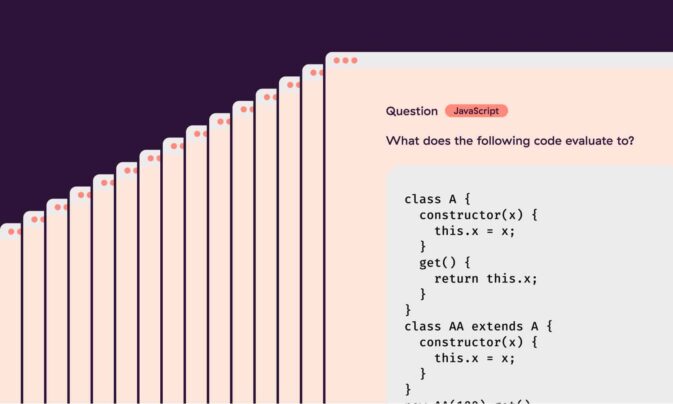Organizations everywhere have a problem. There’s a major gap between the skills businesses have and the skills they need, and that gap is predicted to drive an $8.5 trillion loss each year by 2030. To avoid this, some of the best companies turn to competency skills assessments when hiring their newest staff members.
New to competency assessments? Well, by the end of this article, you won’t be, as we’ll dive deep into employee competency, how to assess it, and the value your business can gain from competency tests.
There’s a lot to get through, so let’s get started!
Quick Links:
- What is Competency? And What is a Competency Skills Assessment?
- Competency Assessments – The 4 Types Explained
- The Advantages and Challenges of Assessing Competencies vs. Skills
- The Most Common Use Cases for a Competency Assessment In the Workplace
- How to Use a Competency Assessment System in Your Company
What is Competency? And What is a Competency-Driven Skills Assessment?
Let’s start with a couple of definitions – first, of a competency itself:
“A competency defines the capability to apply a combination of knowledge, skill, and ability to successfully perform a task in a defined work setting.”
There are two critical factors to take away from that definition.
Firstly, competency is the combination of knowledge, skill, and ability. Competencies are complex and often take hours, days, or even months of practice to master.
Secondly, competency is judged on the ability to perform a specific task. Competencies refer to very particular outputs; they aren’t generic, subjective characteristics in the same way that skills are.
So, now we know what a competency is, let’s take a look at a definition for a competency assessment:
“Competency assessments evaluate someone’s capabilities against the competency requirements of their job, often measured against a detailed competency model.”
Competency tests are unique because they assess individuals on specific requirements for a job role, often modeling someone’s ability against a task they’re required to do within their role. They can be used on candidates applying for a new role or existing employees to understand whether any skill gaps exist.

Competency Assessments – The 4 Types Explained
Competency assessments come in many different shapes and sizes. They help recruiters and managers get a well-rounded view of a candidate’s or employees’ skills and, crucially, any skill gaps that may exist.
Here are the four key areas a competency assessment measures.
#1 – Behavioral Competencies
Behavioral competencies showcase how effectively individual works with others day-to-day. This sort of competency assessment will focus on personality, interpersonal skills, leadership, and analysis.
An example – A behavioral competency-based assessment may require someone to demonstrate how they would lead a group to develop a new business idea.
#2 – Cognitive Competencies
When running a competency assessment on cognitive ability, you’re trying to understand how quickly an individual can process information. Specifically, a cognitive ability assessment will focus on areas such as attention to detail, memory, and perpetual mental speed.
An example – Here, you may ask an individual to remember and recite a range of role-based statistics.

#3 – Domain Competencies
A domain competency is based on a particular skill or area that an individual works in. This could be marketing, finance, sales, project management, customer care, or IT.
An example – When running a domain competency assessment for a Graphic Designer, they may be asked to demonstrate how they’d plan, design, and launch a new logo.
#4 – Technical Competencies
In many ways, technical competencies are similar to hard skills in that they demonstrate a very particular area of technical knowledge. The key difference is that technical competencies can be used to create a technical output, such as a developer using HTML to build a website.
An example – A technical competency assessment for a data scientist may be to create data visualizations using PowerBI.
The Advantages and Challenges of Assessing Competencies vs. Skills
If you already test for soft and technical skills in your hiring process, you may wonder what makes competencies any better. Let’s take a look at how competency testing measures up against skills tests by reviewing the advantages and challenges.
Advantage #1 – Equality
Because a competency test takes a task-based approach, it’s completely fair and equal for everyone that takes it. Everyone is assessed on exactly the same objective, helping you create consistent competency assessment data while using benchmarked capability analytics to make business decisions.
Advantage #2 – Efficiency
Because it’s easy to benchmark performance against a competency model, it’s simple for most organizations to assess candidates at scale. This is especially important when making a new hire as it not only certifies who has met the target level but allows you to do it quickly, reducing your time to hire.
Advantage #3 – Relevancy
Whereas skills tests can be generic, competency tests assess new employees on a task they’d actually perform on the job. That relevancy benefits everyone, as organizations get a more reliable performance benchmark than they do with skills assessment data, and it gives the candidate an insight into the type of work they could be doing in the future.
Challenge #1 – They’re Rigid
Competency tests are by design very rigid, making it hard for any candidate to stand out. Not only is this quite boring for candidates and employees, but it can actually hide a certain skill gap, especially if the test taker mistakenly got the right answer.
Challenge #2 – They Require Aligned Expectations
Everyone taking a competency-based skills assessment needs to be aligned on what ‘good’ looks like to make them truly effective. The quality and scope of the task need to be fully understood so that everyone knows what they’re working towards and the modeling can be tested effectively.
The Most Common Use Cases for a Competency Assessment In the Workplace
In the business world, competency-driven tests can be used in a number of different ways to support organizational growth – here are 5 of the most common use cases.
#1 – To Test Candidates During the Hiring Process
The modern-day talent acquisition strategy ensures candidates exhibit the required skills, knowledge, and capabilities to do the job. Competency assessments beat traditional job task analysis as a great way to check if a candidate can perform well in the role.

#2 – To Identify Company-Wide Skills Gaps
Whether it’s measuring organizational capability, planning current and future jobs, or helping to inform organizational plans, competency tests help companies identify where their skill gaps lie and what skills a good employee needs to excel.
#3 – To Evaluate Job Performance
A role-based competency model is a great way to test employees’ performance against each other during appraisal season. Not only is it fair for everyone, but it also creates a solid benchmark to compare progression from appraisal to appraisal.
#4 – To Understand Employee Career Progression & Personalized Learning Plan
Competency assessments are a great way to identify gaps in an individual’s performance and help them plan out their career development. Managers can work with employees to understand their skill gaps, creating lifelong learning plans to help their ongoing development.
This approach forms part of a wider talent management strategy, using skills gap analysis to support a culture of continuous learning while reducing employee turnover.
#5 – To Deliver Rapid Onboarding
Competency tests are also a great way to assess the proficiency level of new employees during the onboarding process. They provide a benchmark for hiring managers to assess progress, identify further training requirements, and ultimately understand when a new employee is ready to go solo!
How to Use a Competency Assessment System in Your Company – A 7-Step Process
By now, there’s a good chance you’re on board with competency-based testing. If so, here’s how we suggest you incorporate it into a classic 7-step competency-based hiring process.
#1 – Before you do anything, use a competency test to assess the current high-performers in your organization. This will help you set a benchmark of what good looks like while also identifying a skill gap or two that your new hire may be able to fill.
#2 – Once your job ads are out into the world, we recommend ditching the CVs in favor of Skills Tests. Not only are skills assessments super fun for candidates, but they’re also a far more efficient way to turbocharge your pre-screening.
#3 – Once you’ve filtered down your initial list of applicants, it’s time to get to know them better by understanding their soft skills. Async/one-way video interviews are the way to go here, as they allow you to check your candidates have the soft skills required for the role while saving you time on countless filter interviews. At Toggl Hire, we do it using our Video Intros features – check it out below!
#4 – Now that you know your candidates have the right skills, it’s time to move on to the competencies. Use technical tests, such as homework assignments, so that your candidate can show they’re competent at a real-life task while giving you, the recruiter, insight into how they work and what they can deliver.
#5 – If they make it through that, it’s interview time. With a competency-based assessment in mind, include some technical questions/tasks in the interview to double-check that your candidate is the right fit and can help close those skill gaps.
#6 – As the interview draws to a close, remember to discuss future career growth and development with your preferred candidate. This will help you ensure they have the self-awareness that there are always new competencies to master while helping to set their expectations of the role.
#7 – Once they’re successfully on board, remember to use your competency tests to tailor, monitor, and optimize the onboarding process. It’ll help you manage your new employee’s performance while keeping expectations aligned during probation.
Wrapping up
As the worldwide skill gaps continue to grow, organizations increasingly turn to competency-based assessments to ensure their newest hires have what it takes to help them drive real growth.
Competency tests really do take the risk away from hiring, providing real insights into how your latest candidate could perform on the job.
If you want to take your hiring to the next level, we recommend using skills and competency assessments to give you a rounded view of your next superstar employee!
James Elliott is a Strategy Manager and Writer from London, UK. When not working on the day job, James writes on a variety of business and project management topics with a focus on content that enables readers to take action and improve their ways of working. You can check out James’ work on his website or by connecting on LinkedIn.




